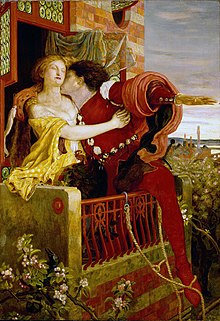http://www.audio-lingua.eu/spip.php?article2307 Being a woman now and then part 1
http://www.audio-lingua.eu/spip.php?article2308 Part 2
Welcome to Mrs Le Nair's diary
Chers élèves, ce blog a été créé afin de faciliter votre apprentissage de l'anglais et vous mettre à portée de "click" les exercices, textes, vidéos ou audios étudiés en classe. Vous pourrez ainsi travailler de façon plus autonome et vous tenir à jour lors de vos absences.
Bonne année scolaire et apprentissage à tous !
jeudi 21 février 2013
2ndes 7:Ancient Forests Advert Greenpeace UK
2) http://www.youtube.com/watch?v=1BCA8dQfGi0 another Greenpeace awareness campaign (âmes sensibles s'abstenir: not for the tender- hearted)
2ndes 7 :dian fossey/heroes
Dian Fossey (/daɪˈæn ˈfɒsi/; January 16, 1932 – c. December 27, 1985) was an American zoologist who undertook an extensive study of gorilla groups over a period of 18 years. She studied them daily in the mountain forests of Rwanda, initially encouraged to work there by famous anthropologist Louis Leakey. She was murdered in 1985; the case remains open
Dian Fossey Biography:
Dian Fossey studied as a preveterinary student in her undergraduate work, and spent seven years as director of occupational therapy in a Louisville, Kentucky hospital.
Dian Fossey developed an interest in mountain gorillas, and wanted to see them in their natural habitat. Her first visit to the mountain gorillas came when she went in 1963 on a seven-week safari.
After raising funds, Dian Fossey returned to Africa, visited Jane Goodall to learn from her, and then made her way to Zaire and the home of the mountain gorillas.
Dian Fossey earned the trust of the gorillas, but human beings were another matter. She was taken into custody in Zaire, escaped to Uganda, and moved to Rwanda to continue her work.
By techniques she developed, especially imitation of the gorilla behavior, she was again accepted as an observor by a group of mountain gorillas there. Fossey discovered and publicized their peaceful nature and their nurturing family relationships.
From 1970-1974, Fossey went to England to get her doctorate at Cambridge University, in zoology. Her dissertation summarized her work thus far with the gorillas.
Returning to Africa, Fossey began taking in research volunteers who extended the work she'd been doing. When one of her favorite gorillas, Digit, was killed, she began a very public campaign against poachers who killed gorillas.
In 1980, Fossey returned to the US to teach at Cornell University. In 1983 she published Gorillas in the Mist, a popularized version of her studies. Saying she preferred gorillas to people, she returned to Africa and to her gorilla research, as well as to her anti-poaching activity.
On December 26, 1985, her body was discovered near the research center. Presumably, Dian Fossey had been killed by the poachers she'd fought.

éndes 7:Ways to Save Mountain Gorillas
A°Explain what is the African Wildlife foundation
B°Fill in the following script
Part 1 (Voice)The AWF has been working to ………………./……………….. to improve
lifelihood in …………………
for
………………………years , and for the past 3……………………they ……………………………with the……………………../…………………………..program
to …………………/ …………………..gorillas.
This
work means people can……………………..these ………………….in their ……………………habitat.
C°Part 2 (0.41 mn) : quote
the names of 3 African countries which are mentioned in the report
D°Right or Wrong ?
Correct the mistakes
-The
number of gorillas has been in decline for years
-They
were not in danger of extinction
though
-Since
AWF’s actions the population of mountain gorillas has increased.
-There
are 7000 gorillas left in the world today
-Human
habitat has no impact on the population of gorillas
-AWF’s
action is to limit tourism
E°Part
3 ( 1mn45 )What is the aim of AWF ? Explain in English or in French
what you have understood about it
mercredi 13 février 2013
TES /TCF :Undocumented Immigrants Line Up for DREAM Act
2° AUDIO PODCAST :http://pedagogie2.ac-reunion.fr/cyberprofLV/telechargements/podcaz_Bac_anglais/EE-Illegal_immigration.avi
3°A FEW STATISTICS ABOUT THE HISPANICS IN THE USAPopulation
52.0 million
The Hispanic population of the United States as of July 1, 2011, making people of Hispanic origin the nation's largest ethnic or race minority. Hispanics constituted 16.7 percent of the nation's total population. In addition, there are 3.7 million residents of Puerto Rico, a U.S. territory.
This was about a 43 percent increase from the Hispanic population in the 2000 Census, which was 35.3 million.
132.8 million
The projected Hispanic population of the United States on July 1, 2050. According to this projection, Hispanics will constitute 30 percent of the nation's population by that date.Source: The Hispanic Population: 2010
2nd=Ranking of the size of the U.S. Hispanic population worldwide, as of 2010. Only Mexico (112 million) had a larger Hispanic population than the United States (50.5 million).
63%
The percentage of Hispanic-origin people in the United States who were of Mexican background in 2010. Another 9.2 percent were of Puerto Rican background, 3.5 percent Cuban, 3.3 percent Salvadoran and 2.8 percent Dominican. The remainder was of some other Central American, South American or other Hispanic/Latino origin.
States and Counties
Florida
The state with the highest median age, 34, within the Hispanic population.
Source: 2011 Population Estimates
Source: 2011 Population Estimates
14.4 million
The estimated population for those of Hispanic-origin in California as of July 1, 2011.8
The number of states that have a population of 1 million or more Hispanic residents -- Arizona, California, Colorado, Florida, Illinois, New Jersey, New York and Texas.
More than 50%= The percent of all the Hispanic population that live in California, Florida, and Texas as of July 1, 2011
147.9%=The percentage increase in the Hispanic population in South Carolina between April 1, 2000, and April 1, 2010, the highest of any state. Alabama had the second highest increase, with 144.8 percent.
4.7 million
The Hispanic population of Los Angeles County, Calif., in 2010. This is the highest of any county
.97%=Proportion of the population of East Los Angeles, Calif., that was Hispanic as of 2010. This is the highest proportion for any place outside the Commonwealth of Puerto Rico with 100,000 or more total population.
.25=Number of states in which Hispanics were the largest minority group. These states were Arizona, California, Colorado, Connecticut, Florida, Idaho, Illinois, Iowa, Kansas, Maine, Massachusetts, Nebraska, Nevada, New Hampshire, New Jersey, New Mexico, New York, Oklahoma, Oregon, Rhode Island, Texas, Utah, Vermont, Washington and Wyoming.
Businesses
2.3 million
The number of Hispanic-owned businesses in 2007, up 43.6 percent from 2002.
$350.7 billion
Receipts generated by Hispanic-owned businesses in 2007, up 58.0 percent from 2002.
23.7%
The percentage of businesses in New Mexico in 2007 that were Hispanic-owned, which led all states. Florida (22.4 percent) and Texas (20.7 percent) were runners-up.
Families and Children
10.7 million
The number of Hispanic family households in the United States in 2011.Percentage of Hispanic married couples with children under 18 where both spouses were employed in 2011.
Spanish Language
37.0 million
The number of U.S. residents 5 and older who spoke Spanish at home in 2010. More than half of these Spanish speakers spoke English “very well.”
.75.1%=Percentage of Hispanics 5 and older who spoke Spanish at home in 2010.
Income, Poverty and Health Insurance
$37,759
The median income of Hispanic households in 2010.
26.6%=The poverty rate among Hispanics in 2010, up from 25.3 percent in 2009.
30.7%=The percentage of Hispanics who lacked health insurance in 2010, which is down from 31.6 percent in 2009
Education
62.2%
The percentage of Hispanics 25 and older that had at least a high school education in 2010.
13.0%=The percentage of the Hispanic population 25 and older with a bachelor's degree or higher in 2010.
1.1 million=Number of Hispanics 25 and older with advanced degrees in 2010 (e.g., master's, professional, doctorate).
6.2%=Percentage of students (both undergraduate and graduate students) enrolled in college in 2010 who were Hispanic.

lundi 11 février 2013
dimanche 10 février 2013
1re S :History of Valentine's Day
http://www.history.com/topics/valentines-day (Level B1-B2)
Typical Valentine's Day Greetings
In addition to the United States, Valentine's Day is celebrated in Canada, Mexico, the United Kingdom, France and Australia. In Great Britain, Valentine's Day began to be popularly celebrated around the 17th century. By the middle of the 18th, it was common for friends and lovers of all social classes to exchange small tokens of affection or handwritten notes, and by 1900 printed cards began to replace written letters due to improvements in printing technology. Ready-made cards were an easy way for people to express their emotions in a time when direct expression of one's feelings was discouraged. Cheaper postage rates also contributed to an increase in the popularity of sending Valentine's Day greetings.
Americans probably began exchanging hand-made valentines in the early 1700s. In the 1840s, Esther A. Howland began selling the first mass-produced valentines in America. Howland, known as the “Mother of the Valentine,” made elaborate creations with real lace, ribbons and colorful pictures known as "scrap." Today, according to the Greeting Card Association, an estimated 1 billion Valentine’s Day cards are sent each year, making Valentine's Day the second largest card-sending holiday of the year. (An estimated 2.6 billion cards are sent for Christmas.) Women purchase approximately 85 percent of all valentines.
Americans probably began exchanging hand-made valentines in the early 1700s. In the 1840s, Esther A. Howland began selling the first mass-produced valentines in America. Howland, known as the “Mother of the Valentine,” made elaborate creations with real lace, ribbons and colorful pictures known as "scrap." Today, according to the Greeting Card Association, an estimated 1 billion Valentine’s Day cards are sent each year, making Valentine's Day the second largest card-sending holiday of the year. (An estimated 2.6 billion cards are sent for Christmas.) Women purchase approximately 85 percent of all valentines.
OR (Easier level A2 )http://videos.huffingtonpost.com/healthy-living/the-history-of-valentines-day-38364200
2)What women really want for St Valentine's day http://videos.huffingtonpost.com/healthy-living/what-women-really-want-for-valentines-day-street-interviews-517267859
4) Audio : St Valentine (B1) :http://www.audio-lingua.eu/spip.php?article874 et http://podcast-langues.ac-rouen.fr/index.php?p=3
GAY MARRIAGE=http://pedagogie2.ac-reunion.fr/cyberprofLV/index_fichiers/Podcaz_audio_anglais.htm
GAY MARRIAGE=http://pedagogie2.ac-reunion.fr/cyberprofLV/index_fichiers/Podcaz_audio_anglais.htm
vendredi 8 février 2013
Guns already allowed in schools with little restriction in many states
http://openchannel.nbcnews.com/_news/2013/01/14/16468754-guns-already-allowed-in-schools-with-little-restriction-in-many-states?lite
jeudi 7 février 2013
Inscription à :
Articles (Atom)




